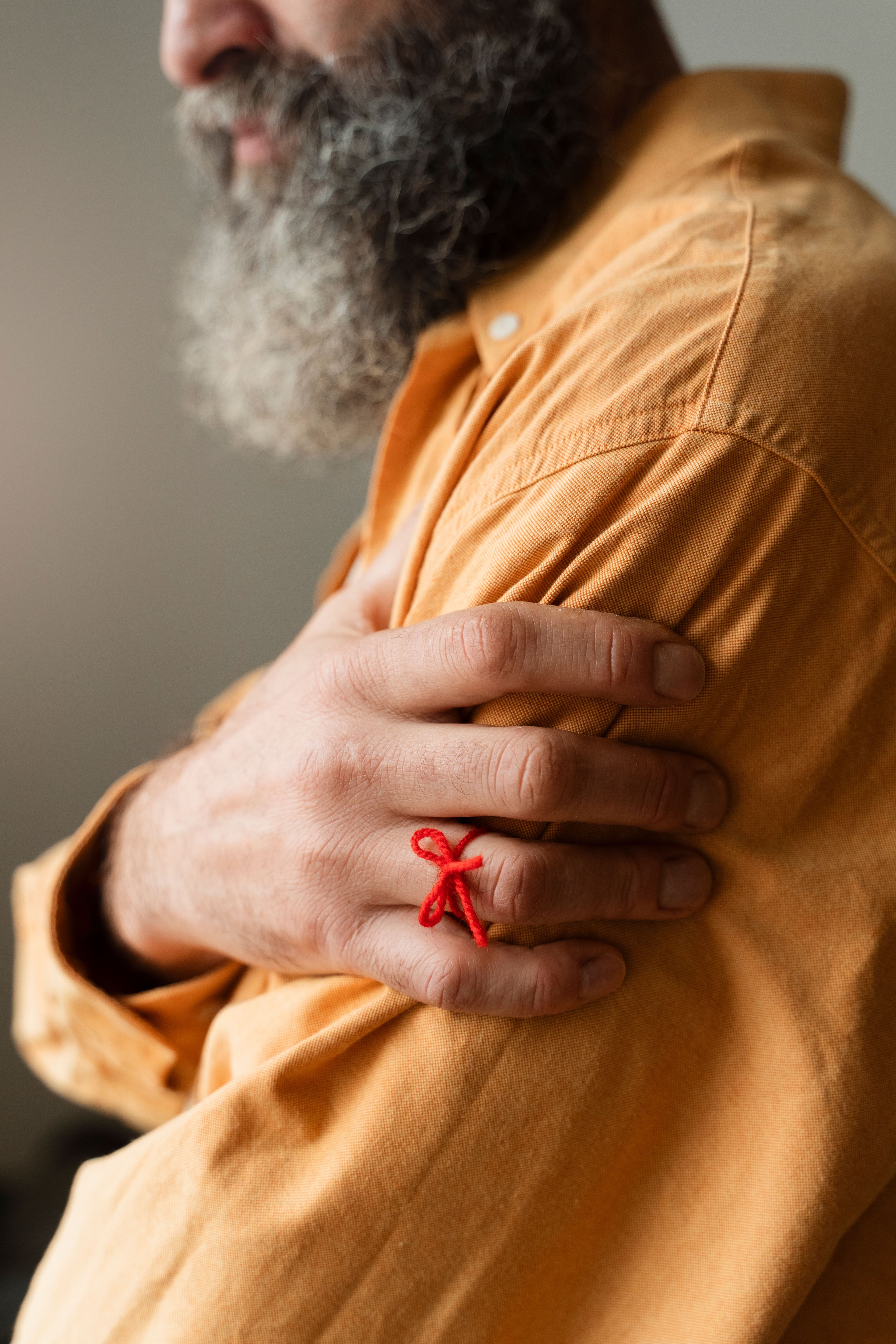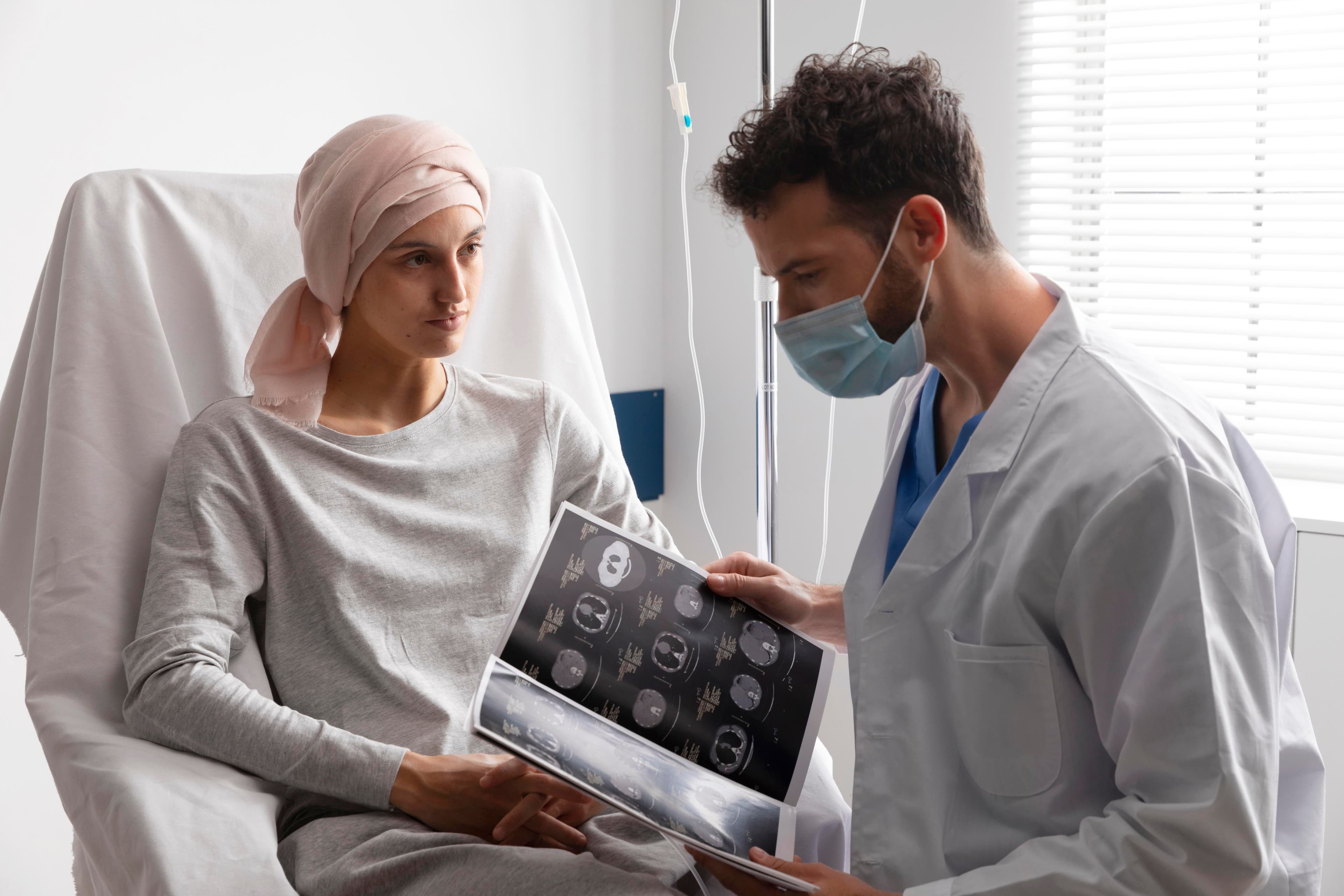Cancer Symptoms Guide: Know the Early Signs of Cancer

Dr. Vrundali Kannoth•6 minutes•28 Aug 2025
Cancer Symptoms: An Overview on Causes & Signs
Not every warning sign feels like an emergency, a weird ache here, a bit of unexplained weight loss there, easy to brush off. But sometimes, these small changes are your body’s way of waving a red flag. Whether you're curious about the early symptoms of cancer or wondering how it shows up differently, in women, in men, it all starts with understanding cancer and the main cancer symptoms. From common symptoms of cancer to treatment and prevention, this guide walks you through the early clues you shouldn’t ignore.
Common symptoms of cancer

Cancer can look different for everyone, but some signs are more widely known than others. Things like sores that don’t heal, difficulty swallowing or indigestion, persistent fatigue or weakness, and unexplained weight loss often come to mind first. But beyond these well-known signs, there are other symptoms worth paying attention to:
Changes in skin
Noticing a new mole, patch of discolouration, or unexplained itch that won’t go away? Skin changes like these may seem harmless. However, when they show up suddenly or begin to evolve, they can sometimes point to underlying symptoms your body wants you to notice.
Unusual bleeding
If you’re noticing blood in your stool or urine, it’s your body’s way of saying something might be wrong. These can be early cancer symptoms in areas like the cervix, colon, or urinary tract.
Persistent cough or trouble breathing
That cough you’ve had for weeks? Or the breathlessness that creeps in even when you're doing nothing? If it’s hanging around longer than a seasonal cold and feels different somehow, it could be a sign of something deeper, like lung cancer symptoms or issues in your airways that need checking.
Lumps or thickening under the skin
When a new lump appears or an area under your skin starts to feel firmer or thicker than usual, it’s not something to overlook. Even without pain, changes in places like the breast, neck, or underarm can be a symptom of cancer in the body.
Symptoms of cancer in women
Some early symptoms of cancer in women can feel like nothing more than routine changes. You might blame your bloating on your cycle, brush off frequent urination, or chalk up bowel changes to diet.
But cancer affects 1 in 3 women globally in their lifetime, and many cases are caught too late because the signs are overlooked.
Therefore, it is very important to catch these symptoms and how they show up in your body in time.
Here's how to identify cancer symptoms that may need a second look:
- •Abnormal vaginal bleedingBleeding between periods, after menopause, or during intercourse isn’t something to shrug off. It could be an early cancer symptom related to the cervix , uterus, or reproductive organs. These are also often the signs mistaken for routine cycle changes.
- •Changes in the breastIf the skin on your breast starts to look puckered, turns red, feels warmer than usual, or your nipple starts pulling inward, those could all be symptoms. These changes might show up in the early or later cancer stages, and it’s always better to get them checked.
- •Pelvic or abdominal painPersistent cramping, bloating, or pelvic heaviness may not always be about digestion or your period. Ongoing discomfort in these areas can be a sign of initiation or prevalence of cancer affecting the ovaries , uterus, or nearby organs. Paying attention to these patterns is part of understanding your body’s way of signalling something deeper.
Symptoms of cancer in men
Cancer doesn’t always come with loud symptoms, and in men, many early signs are easy to dismiss as ageing, stress, or everyday strain. But the risk is real. In fact, 1 in 2 men is likely to be diagnosed with cancer in their lifetime. Here are the symptoms in men to look out for:
- •Changes in urination:Needing to pee more often, struggling to start or stop, or noticing blood in urine could be symptoms of cancer in the body, particularly related to the prostate or bladder.
- •Testicular swelling or lumps:While often painless, any unusual swelling, heaviness, or change in shape can be one of the signs and symptoms of cancer that men may overlook.
- •Persistent back or bone pain:Ongoing pain in the back, hips, or bones, without clear injury, might point to symptoms of cancer spreading, especially from the prostate or other organs.
Note:
Symptoms by cancer stages
Symptoms of cancer often change as the disease progresses, starting subtly and becoming more noticeable over time. In the early stages, symptoms may be mild, like fatigue, appetite loss, or a small lump, which are easy to overlook. As the cancer advances, symptoms tend to affect more parts of the body and become harder to ignore. Recognising how cancer stages and symptoms evolve can help you understand what’s normal and what’s not. Here’s how symptoms can show up across different cancer stages:
- •Stage 1:Often no symptoms, or very mild ones like fatigue, a small lump, or slight weight loss.
- •Stage 2:Localised pain, noticeable lump growth, changes in skin or appetite, and early signs like abnormal bleeding.
- •Stage 3:More intense symptoms - persistent pain, swelling in lymph nodes, difficulty breathing or swallowing, or visible changes in the body.
- •Stage 4:Symptoms of cancer spreading (metastasis), such as bone pain, neurological issues, severe fatigue, and organ-related complications.
- •Remember:Paying attention to these changes can help catch cancer earlier and act faster.
When to see an oncologist
It’s easy to downplay symptoms when life gets busy, but when your body keeps nudging you that something’s not right, it’s important to listen. Knowing how to identify cancer symptoms early gives you a better shot at effective treatment. If something doesn’t feel right and isn’t going away, don’t wait it out.

Here are some of the most important signs and symptoms of cancer that should prompt a visit to your oncologist:
- •Any symptom (pain, bleeding, fatigue, weight change) lasting more than two weeks
- •Symptoms that seem to worsen instead of improving
- •A pattern, like digestive issues or coughing, that keeps returning
- •Changes that are sudden, unexplained, or out of character for your body
- •When a few small, nagging issues such as fatigue, bloating, or mild pain start to show up together or don’t go away over time
If your oncologist suspects cancer, they’ll decide what tests you need, like blood panels, scans (CT, MRI, PET), or biopsies, based on your symptoms of cancer in the body. Spotting patterns early supports faster cancer symptom and treatment planning.
Treatment and prevention
While you can temporarily manage some symptoms, like taking painkillers or antacids, cancer symptoms shouldn’t be treated without a proper diagnosis. Masking the pain without understanding the cause can delay detection during early cancer stages, when treatment is often most effective.
Once diagnosed, your care team will look at both the cancer symptoms and treatment together. This may include surgery, chemotherapy, radiation, or targeted therapies, depending on the type and stage of the cancer.
To lower your risk and catch warning signs early, here are a few steps that can make a real difference:
- •Stay on top of regular screenings (e.g., mammograms, Pap tests, colonoscopies)
- •Pay attention to changes in your body, even the subtle ones
- •Learn your family history and discuss it with your oncologist
- •Avoid tobacco, limit alcohol, and maintain a balanced diet
- •Protect your skin from excess sun exposure
Remember:
Understanding cancer symptoms: Why early action matters
Every body is different, but when something doesn’t feel right, your body is asking for attention. Identifying the common symptoms of cancer can make all the difference in how quickly and effectively it’s treated. Whether it's a subtle change or a symptom that’s stuck around too long, it’s always worth checking.
If you or someone you love is experiencing symptoms, don’t wait. Reach out to a trusted cancer center or specialist. The right support, at the right time, can truly save lives.
FAQs on symptoms of any cancer
They often begin subtly, like unexplained fatigue, weight loss, or changes in skin or digestion. These may be easy to miss but are often the body’s first signal that something’s off.
Yes, some can seem to appear suddenly, especially in aggressive or advanced stages. However, many symptoms develop gradually and worsen over time, which is why early detection is key.
Symptoms of cancer in young adults can look similar to those in older adults, such as lumps, bleeding, or pain, but they’re often overlooked due to age. Understanding how to identify cancer symptoms at any age is important for timely care.
Frequent or unexplained fever can be one of the symptoms of cancer in the body, particularly in blood cancers like leukemia or lymphoma. It’s important to monitor it alongside other symptoms.
Yes, many people experience little to no obvious signs. That’s why regular screenings and awareness of your body are crucial, even when you feel fine.
Symptoms vary but often include fatigue, unexplained weight loss, pain, skin changes, or lumps. They can differ based on cancer stages and their location.
